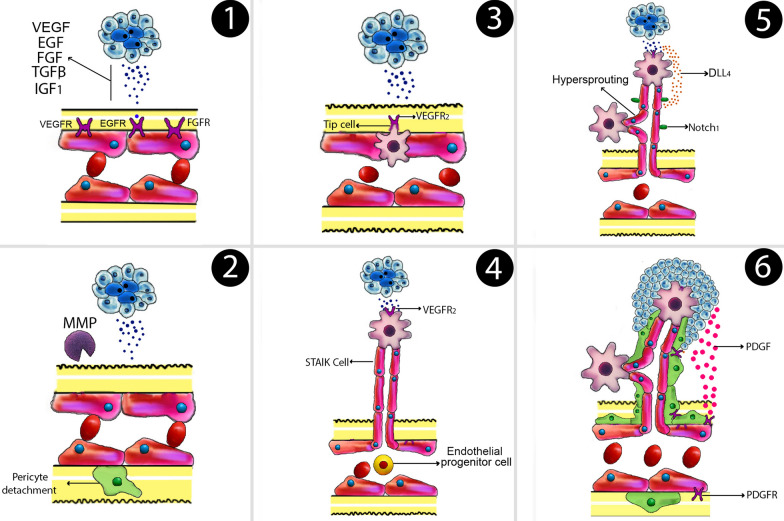Fig. 1.
Angiogenesis HIF-1, which leads to the secretion of pro-angiogenic factors, now the most significant of which being VEGF. Hypoxia also causes basement membrane disintegration and pericyte datachment by increasing protease expression. Angiogenic factor gradients attract specialized endothelial cells. Endothelial cells are transformed into strongly proliferative stalk cells that form the new vessel’s main body. DLL4 production is stimulated by VEGF, that interacts to Notch-1 receptors and suppresses Vascular Endothelial Growth Factor receptor (VEGFR). Pericyte attachment is stimulated by PDGF, which lowers proliferation and sensitivity to VEGF. Tumor growth is aided by the availability of blood. EGF epidermal growth factor, FGF fibroblast growth factors, TGF-β transforming growth factor beta, HIF-1 hypoxia activates hypoxia-inducible factor 1; VEGF: vascular endothelial growth factor, DLL4 delta-like 4, PDGF platelet-derived growth factor, IGF1 insulin-like growth factor 1

